What future for Asia’s old Railways?
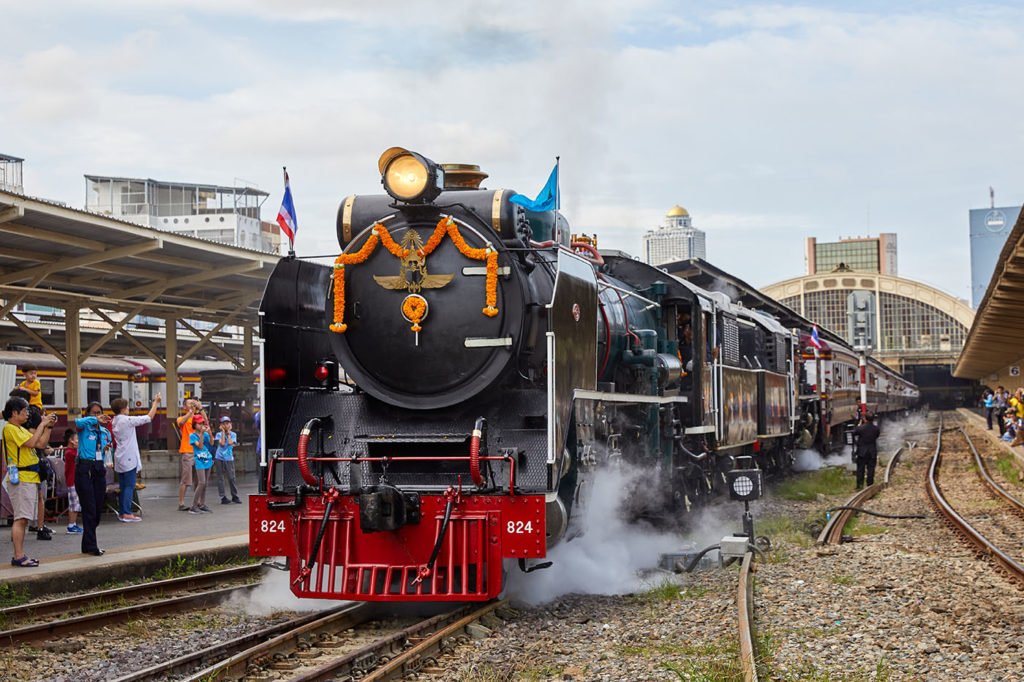
What future for Asia’s old Railways?
Early morning at Bangkok’s Hua Lamphong station is always a busy time. Overnight trains pull into platforms and discharge still sleepy passengers into the cacophony that is modern day Bangkok while the spacious booking hall, with its huge arched roof and portrait of King Chulalongkorn, looks down on travellers who are filled with the excitement of journeys yet to come.
Before the pandemic, I would visit the station often, either to travel somewhere else or just to hang out for half an hour because I was in the area. It was designed by Italian architect Mario Tamagno in an Italian Neo-Renaissance style inspired by Frankfurt Main Hbf station. It began operations in 1916 and at its peak saw over 200 trains and some 60,000 passengers per day.
Four times a year I would get up early to just come and watch the departure of a train hauled by two beautifully preserved Japanese built steam locomotives. At 08.00 the whistle blew and steam billowed forth as they began their run. A bright orange phuang malai hung on the smoke box door, ten spotless burgundy and cream coaches behind and the graceful arc of the station roof in the background.
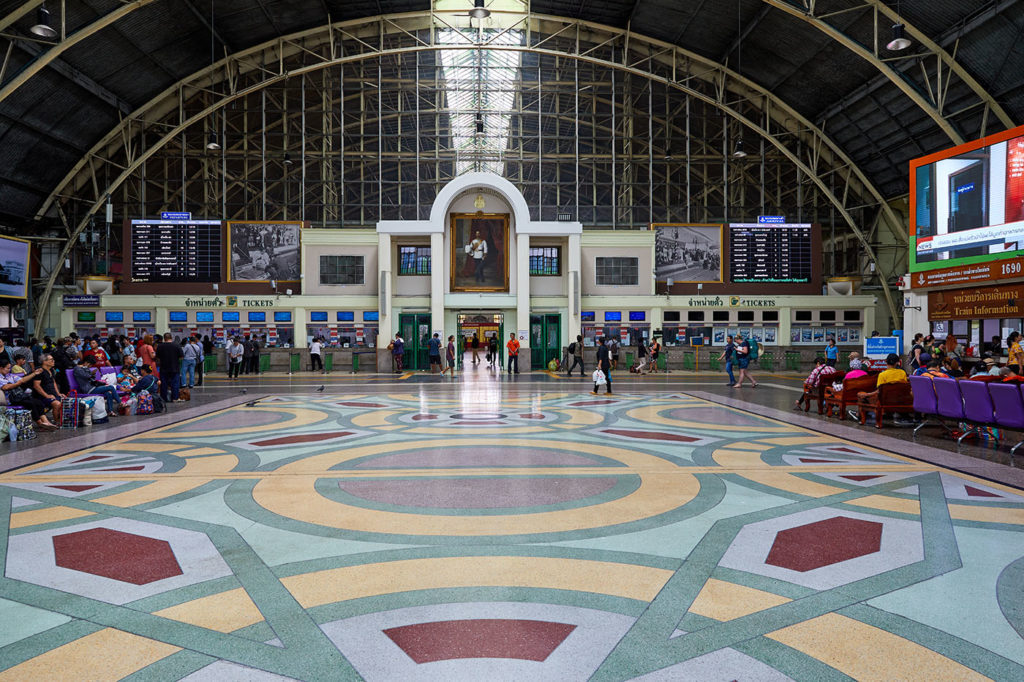

It was an impressive sight and I wasn’t the only one that turned up to enjoy it. For more than half an hour before departure, both children and adults would queue to have their photo taken with the train. Beyond the platforms an army of photographers, both local and international, staked out their positions to document its departure.
Afterwards, I would wander back up the platform and into the station’s food court for breakfast. Railways are in my DNA. My father was an avid train spotter in his youth. Both my grandfather and my elder brother built miniature steam locomotives that hauled children around public parks. In my own youth, I volunteered labour to help restore old stations for one of England’s many preserved railways.
End of an era
Hua Lamphong is one of Southeast Asia’s last remaining grand old railway stations and it breaks my heart to know that it too will close soon. Services will be moved to a new transport hub at Bang Sue which will also be the terminal for the new high-speed rail network. At one point it was said that Hua Lamphong would be turned into a museum. That now seems less certain. The State Railways of Thailand wants to develop it into a commercial area but an outcry from conservationists, commuters, and railway staff have postponed its closure. For a brief period at least.
Kuala Lumpur’s lovely old station was supposed to be a museum though I could see nothing there that betrays the fact. To be fair its Moorish domes do still preside over a handful of commuter trains each day but the lovely old hotel with its atmospheric bar is boarded up. The once pristine white facade is tattered and worn and I couldn’t even make a cursory exploration of the platforms unless I bought a ticket to go somewhere.
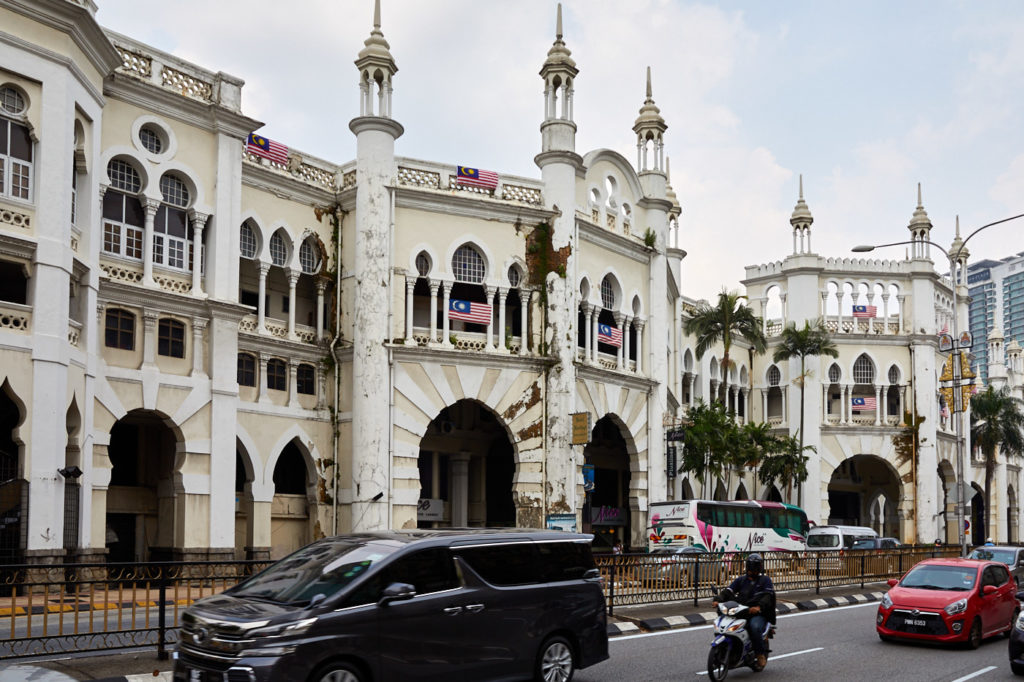
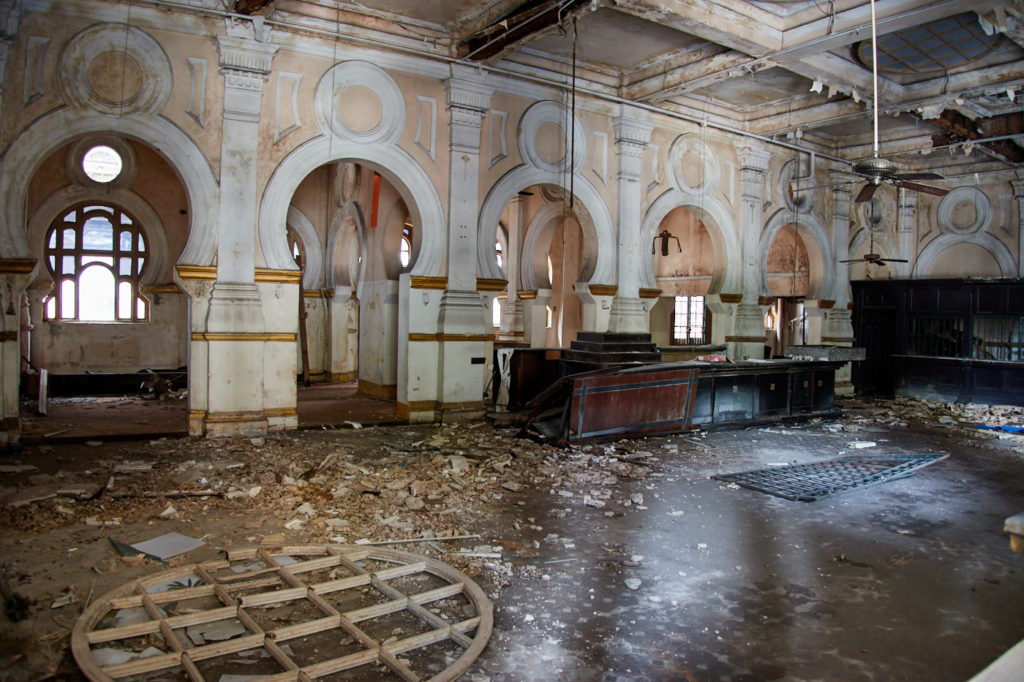
With high-speed rail projects underway or being talked about in most of Southeast Asia it is only a matter of when, not if, these projects will be linked into new networks. High speed trains cannot run on existing tracks they need a gauge of 1,435 mm, most existing networks are only 1,000 mm. Already Malaysia is building the East Coast Rail Link which will connect the east coast beaches with the line that runs from Kuala Lumpur to the south.
The Vientiane to Kunming line will eventually link with the Thai network at Nong Kai. This will reduce both the time and the carbon footprint for the shipment of goods and tourists between China and Southeast Asia.
Some of the existing networks will continue to be used but others are likely to become under-utilised or closed completely. So why not think about preserving some of them?
Museums are all well and good. At least they preserve heritage buildings but the exhibits within them are always cold and lifeless. Trains are dirty, noisy, wonderful things that breathe the romance and excitement of travel like no other mode of transport. They are also important heritage sites often passing through beautiful landscapes. The locomotives, bridges and rolling stock are as much a part of that landscape as the hills and fields that surround it. Nothing taps into a nation’s collective memory quite like its railways. With the right marketing, these can become excellent tourist attractions.
What about heritage and preservation?
In the United Kingdom, the epicentre of railway preservation, The Railway Touring Company runs around 60-65 day trips a year carrying approximately 19,000 passengers. These all operate on the national network. There are also scores of preserved railways. England alone, an area not much bigger than Java has 119 boasting everything from main line to small industrial railways.
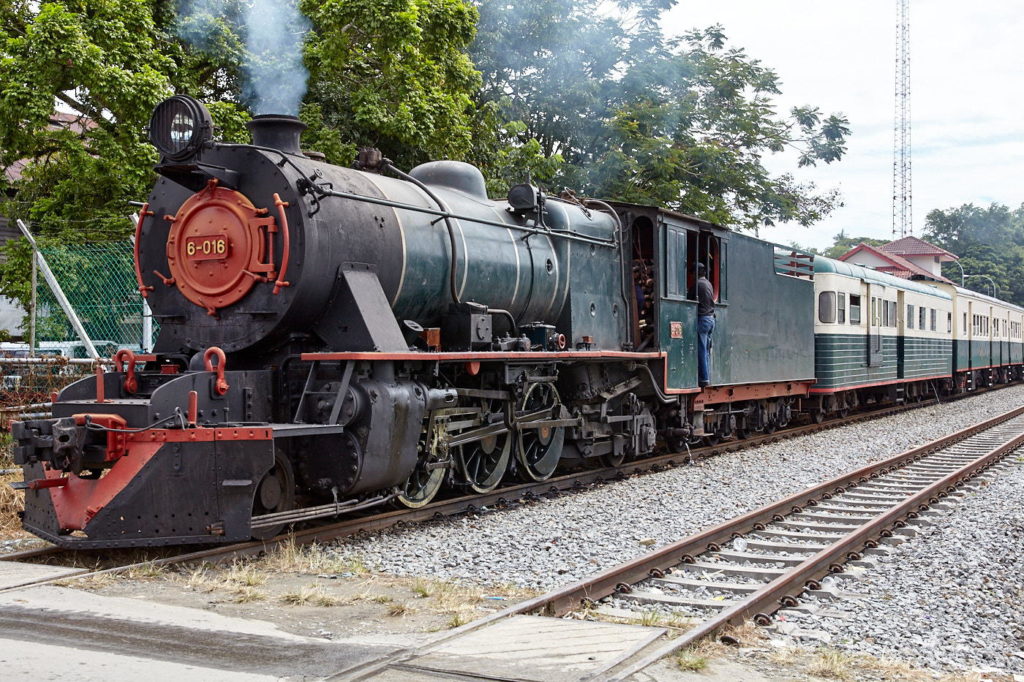
The idea is not without precedent in Asia. The North Borneo Railway, which is operated by the Sutera Harbour Resort, runs two trains a week between Tanjung Aru, near Kota Kinabalu, and Papar. The steam specials that depart from Hua Lamphong are always well subscribed and the Darjeeling Himalayan Railway in India is a Unesco World Heritage site. During the 1990s a section of the Da Lat–Thap Cham railway in Vietnam was restored and returned to active service as a tourist attraction.
Prior to covid, ever increasing numbers of tourists were flooding into Southeast Asia causing the closure of popular attractions such as Maya Bay and Boracay it would make sense, when tourism finally returns, to offer some alternatives. Particularly if they can help bring more visitors to locations that are otherwise ignored.
The infrastructure, locomotives and rolling stock required to explore the possibility already exists. Thailand has a large network it could exploit. In Malaysia, there is a lovely line that runs from Kota Bahru in the north through the middle of the Peninsula to Gemas. Affectionately known as The Jungle Line it connects the former colonial outpost of Kuala Lipis with the Kenong Rimba and Taman Negara national parks.
In Java there is a line that connects Bogor City, about 60 kilometres south of Jakarta and home to one of the world’s great botanical gardens, with the historical city of Bandung. On the way, it passes through some excellent hiking country at Gunung Halimun Salak National Park and Gunung Gede and Gunung Pangrango. There will be plenty of other candidates all across Asia
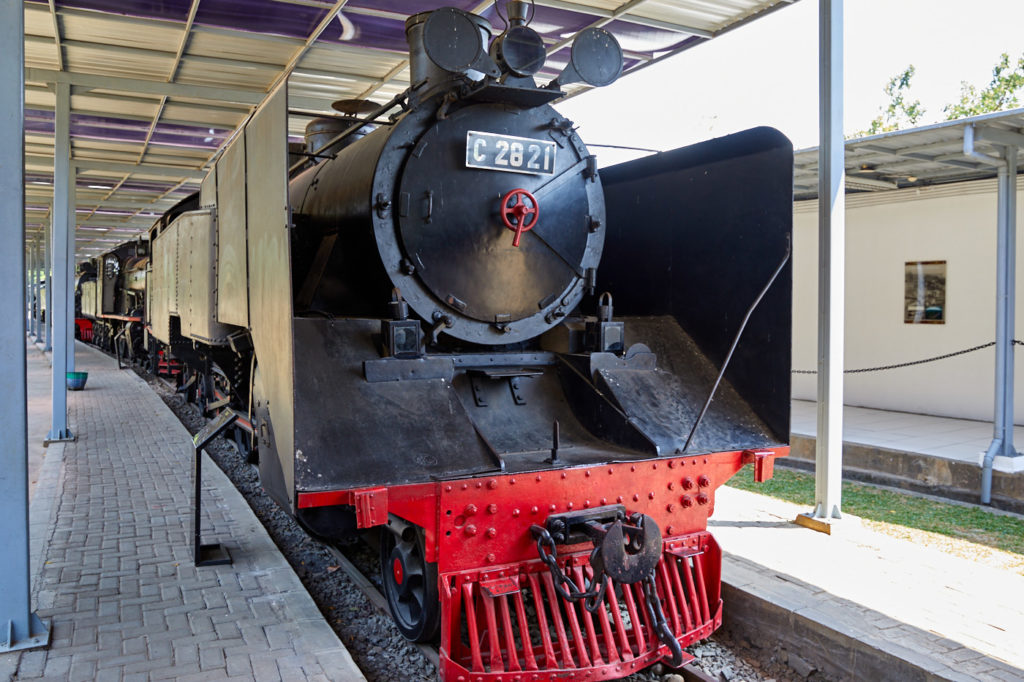
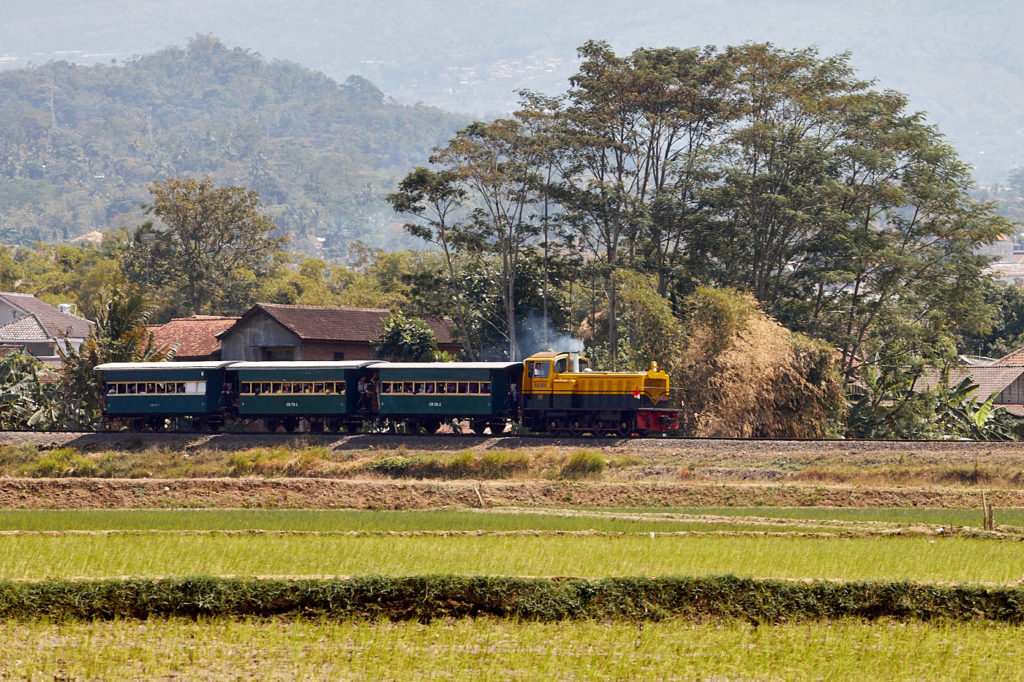
There is already a small railway museum at Ambarawa which has two serviceable lines. The steam locomotives are only fired up if someone charters a whole train but there is a popular diesel-hauled ride which operates on Sundays and public holidays. Ironically Ambarawa is no longer connected to the rest of the rail network in Java. However, it does demonstrate that steam locomotives are not a prerequisite for a successful preserved railway. Well maintained diesels and rolling stock are just as popular. The only thing missing is the will and some savvy marketing.
Related: The Sweet Smell of Steam – A century-old sugar mill in East Java
Thank-you David for this beautifully and passionately written piece. I’m thankful to our steam enthusiasts here in the UK, and the (mainly volunteer) workers, that keep the localised steam train services running.
My earliest memories from before the advent of the diesel engine trains are steam train journeys to Great Yarmouth and other places for the holidays, and the unmistakable odour of the platforms and tunnels. To this day, if I smell a coal burning fire whilst walking the streets, I’m instantly transported back to the days of my youth and my love for steam trains and my electric toy train set. On my tourist travels I’ve ridden on the Keighley to Haworth, the Pickering to Whitby, Sherringham to Holt, Fort William to Mallaig and others.
I hope that the lines in the countries you’ve named here become restored and active again, because as I have witnessed, and you clearly state, that nostalgia for steam trains is ever present everywhere, and is as fascinating to the generations that grew up after commercial steam travel was eradicated, and that should be capitalized on.
Hi Russ, Thanks for the kind words. Yes, the UK has some wonderful preserved lines, even more now than when I left the UK. There are also the excursions on the national network which allow those old locomotives to run at speed. They also run at a profit or they wouldn’t run at all.